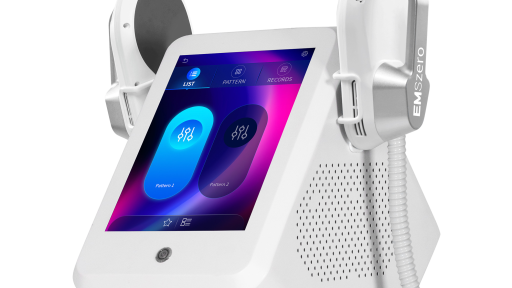
Advancements in Breast Reconstruction
The field of breast reconstruction has witnessed a remarkable evolution in techniques, with innovative approaches significantly impacting patient outcomes. One alternative gaining traction is autologous reconstruction, utilizing tissue from other body areas to sculpt a new breast. According to Dr. Edward Ray, a surgeon at Cedars-Sinai, numerous studies have demonstrated the psychological benefits of breast reconstruction, leading to an improved sense of well-being for a high percentage of patients. Moreover, ongoing research by Dr. Xiaojiang Cui and team focuses on using a patient's own breast tissue and stem cells to regenerate mammary tissue and fat cells, presenting promising future possibilities in personalized breast reconstruction.
Understanding Mammary Stem Cells
Mammary stem cells play a pivotal role in breast development, characterized by their multipotent nature and significant contribution to the formation of mammary glands. This involvement extends to pregnancy-related changes, where mammary stem cells are instrumental in the physiological adaptations of the breast tissue.
Role of Mammary Stem Cells in Breast Development
Studies by experts like Eytan Zlotorynski have shed light on the mechanisms governing mammary stem cells. For instance, XIST loss has been linked to the expansion of adult mammary stem cells and tumorigenesis, highlighting the intricate regulatory pathways influencing their behavior. Additionally, research by Jessica Brooke Spinelli has revealed asymmetric distribution of mitochondria to daughter cells based on their age, uncovering metabolic features that influence cell fate decisions.
Exploring Stem Cell-Based Breast Reconstruction
The potential of mammary stem cells in breast reconstruction presents both challenges and opportunities in stem cell research. Philip Bland's work emphasizes the complexity of establishing distinct lineages within the mammary gland and outlines mechanisms governing early lineage restriction, providing crucial insights for leveraging stem cells in reconstruction efforts. Furthermore, Alycia Gardner's research delves into how interactions between stem cells and the immune system regulate plasticity, offering valuable perspectives for harnessing these interactions in personalized breast reconstruction strategies.
Psychological and Emotional Benefits
Breast reconstruction surgery not only restores physical appearance but also yields profound psychological and emotional benefits for patients, positively impacting their overall well-being. The enhancement of self-esteem and body image is a notable outcome, as individuals often experience a renewed sense of confidence and satisfaction with their appearance following successful reconstruction. Moreover, the emotional recovery process is facilitated, allowing patients to navigate the psychological challenges associated with breast cancer treatment more effectively.
Impact of Breast Reconstruction on Psychological Well-being
Research has consistently demonstrated the positive effects of breast reconstruction on psychological well-being. Patients report feeling empowered and regaining a sense of control over their bodies and lives after undergoing the procedure. This empowerment contributes significantly to their emotional resilience and ability to cope with the psychological impact of breast cancer diagnosis and treatment. Ultimately, breast reconstruction serves as a vital component in supporting holistic recovery for individuals affected by breast cancer.
Emerging Techniques and Alternatives
As breast reconstruction continues to advance, two notable approaches have garnered attention for their potential to revolutionize the field: autologous reconstruction and lab-constructed tissue. These innovative techniques offer promising alternatives with significant implications for patient satisfaction and aesthetic outcomes.
Advancements in Autologous Reconstruction
Autologous reconstruction, utilizing a patient's own tissue for breast reconstruction, has gained increasing popularity due to its ability to provide natural-looking results and long-term benefits. Surgeons are employing innovative approaches and surgical techniques to refine the procedure, leading to improved outcomes and higher patient satisfaction. The personalized nature of autologous reconstruction contributes to enhanced aesthetic results, addressing individual needs more effectively than traditional methods.
Exploration of Lab-Constructed Tissue
In parallel, research progress in regrowing breast tissue in laboratory settings presents an exciting frontier for breast reconstruction. This exploration holds potential applications in generating bioengineered breast tissue for reconstructive purposes, offering a novel avenue that aligns with personalized treatment approaches. Moreover, the broader implications of lab-constructed tissue extend beyond breast reconstruction, encompassing advancements in organ transplantation and regenerative medicine.
The Future of Breast Reconstruction
In the coming decade, the field of breast reconstruction is poised to experience remarkable advancements, driven by a commitment to enhancing patient-centered care and outcomes. Anticipated developments include further refinements in surgical techniques, an expanded array of personalized treatment options, and a deeper integration of innovative technologies. These advancements hold the potential for transformative breakthroughs, offering new hope for individuals seeking comprehensive breast cancer treatment. As research continues to push the boundaries of what is possible, the future of breast reconstruction promises to empower patients with increasingly effective and tailored solutions.
This concludes our exploration of innovative breast reconstruction techniques for 2024.






